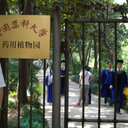2,3,5,4'-Tetrahydroxystilbene-2-O-β-d-glucoside attenuates MPP+/MPTP-induced neurotoxicity in vitro and in vivo by restoring the BDNF-TrkB and FGF2-Akt signaling axis and inhibition of apoptosis.
Märksõnad
Abstraktne
The major bioactive ingredient THSG of Polygonum multiflorum is well established for its anti-oxidation, anti-aging and anti-inflammation properties. Increasing evidence supports the capacity of THSG to ameliorate the biochemistry of neurotrophins and their downstream signaling axis in mouse models to attenuate neurodegenerative diseases such as Alzheimer's and Parkinson's disease. In this study, the neuroprotective effects of THSG were studied in vitro and in vivo. In cultured mesencephalic dopamine neurons and SH-SY5Y cell line, it was found that THSG protected the integrity of the cell body and neurite branching from MPP+-induced toxicity by restoring the expression of FGF2 and BDNF and their downstream signaling pathways to inhibit apoptosis and promote cell survival. The inhibition of Akt signaling by LY294002 or TrkB activity by K252a eliminated the neuroprotective effects of THSG. In the MPTP-induced mouse models of Parkinson's disease, THSG ameliorated the animal behaviors against MPTP-induced neurotoxicity, which was demonstrated by the pole test and the tail suspension test. Biochemical and immunohistochemical analysis verified the THSG-mediated restoration of the FGF2-Akt and BDNF-TrkB signaling axis in the substantia nigra and corpus striatum and the recovery of dopaminergic neurons. These results establish the neuroprotective effects of THSG in vitro and in vivo and unravel the underlying mechanism against toxin-induced neural atrophy, providing a new avenue for the use and pharmacological research of edible medicine for anti-neurodegenerative diseases.




